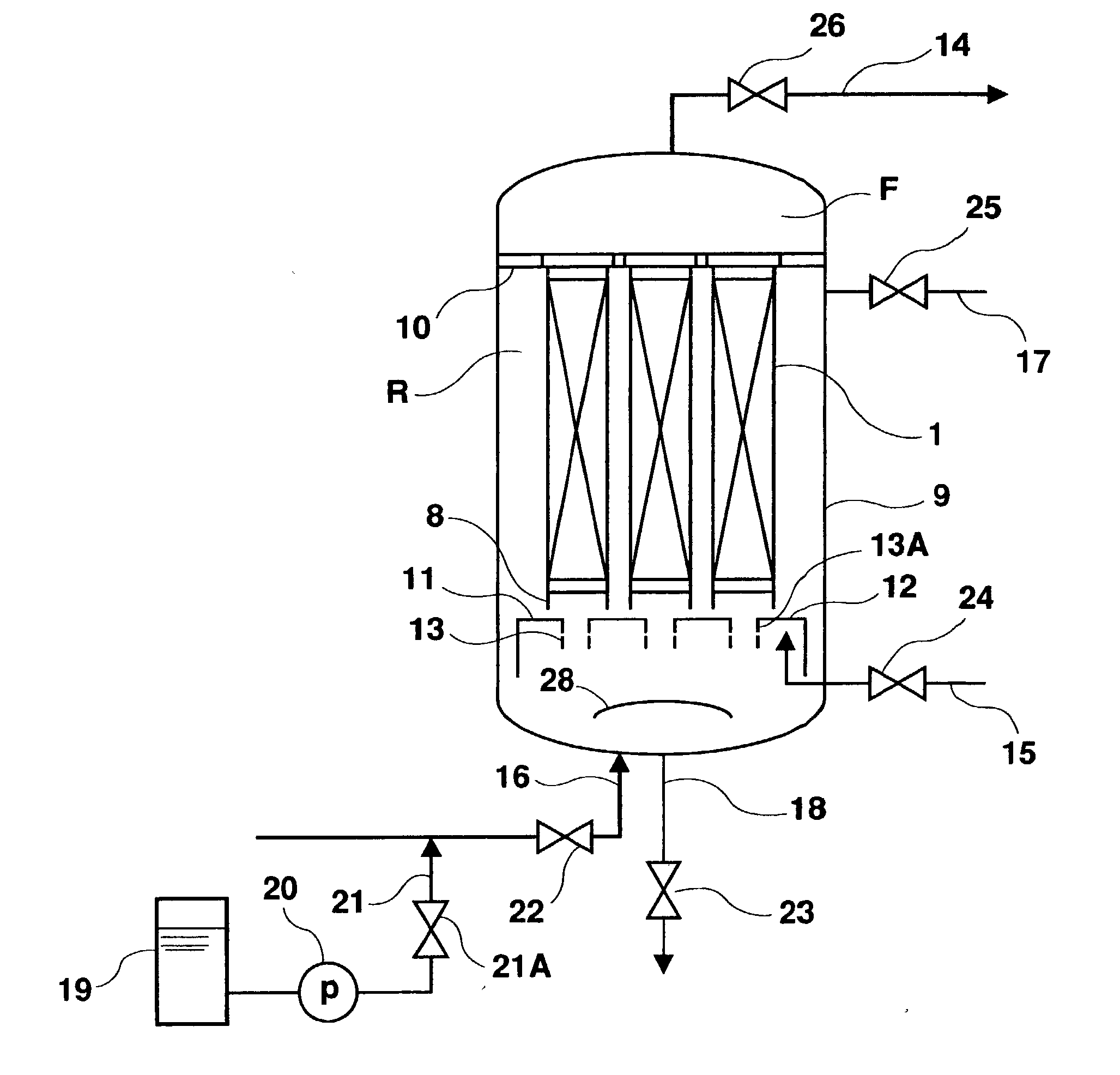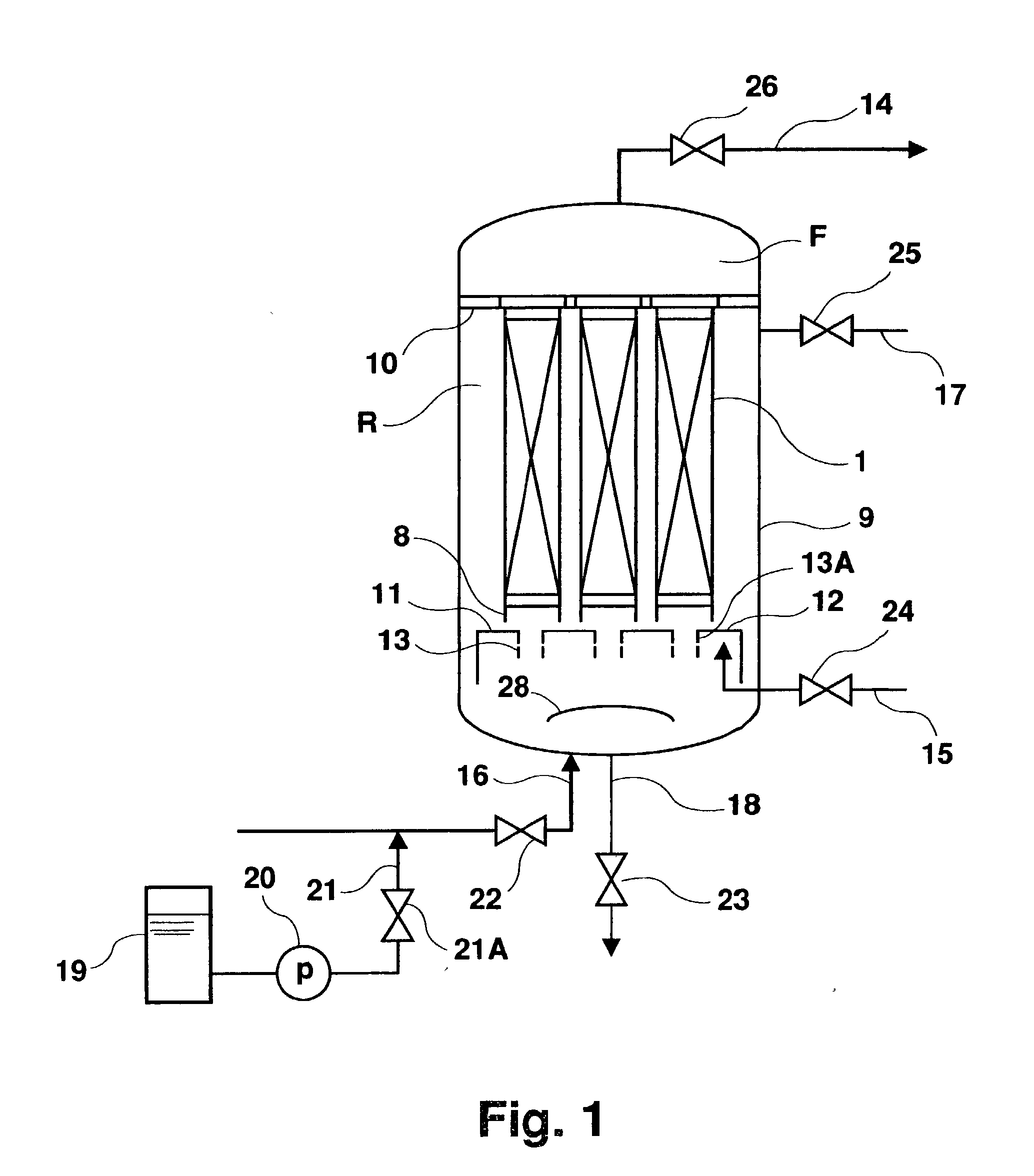Method for treating power plant heater drain water
a technology for draining water and power plants, which is applied in the nature of treatment water, nuclear elements, machines/engines, etc., can solve the problems of reducing the removal rate of iron oxide particles using filters or the like having a commonly used filter rating (pore size), and reducing the heat transfer efficiency and corrosion of heat transfer pipes
- Summary
- Abstract
- Description
- Claims
- Application Information
AI Technical Summary
Benefits of technology
Problems solved by technology
Method used
Image
Examples
example
[0045] The present invention will now be described in more detail referring to an example. The example, however, is only for the purpose of exemplifying and is not intended to limit the scope of the present invention.
[0046] In this example, the following experiment was performed using a compact experimental filtration apparatus having a structure similar to the filtration apparatus shown in FIG. 1. First, deionized water filled into a tank was stirred in a clean oxygen atmosphere and an oxygen injection solution was prepared which had characteristics as described below. Then, the oxygen injection solution was mixed into drain water of a low pressure feed water heater in a power plant (having water temperature of 80.degree. C.-90.degree. C. and concentration of dissolved oxygen of less than 1 .mu.g / L in the experiment, although the control limit was less than 5 .mu.g / L) such that the concentration of dissolved oxygen after the mixing is adjusted between 1 .mu.g / L and 20 .mu.g / L. The ...
PUM
| Property | Measurement | Unit |
|---|---|---|
| concentration | aaaaa | aaaaa |
| concentration | aaaaa | aaaaa |
| concentration | aaaaa | aaaaa |
Abstract
Description
Claims
Application Information
 Login to View More
Login to View More - R&D
- Intellectual Property
- Life Sciences
- Materials
- Tech Scout
- Unparalleled Data Quality
- Higher Quality Content
- 60% Fewer Hallucinations
Browse by: Latest US Patents, China's latest patents, Technical Efficacy Thesaurus, Application Domain, Technology Topic, Popular Technical Reports.
© 2025 PatSnap. All rights reserved.Legal|Privacy policy|Modern Slavery Act Transparency Statement|Sitemap|About US| Contact US: help@patsnap.com



